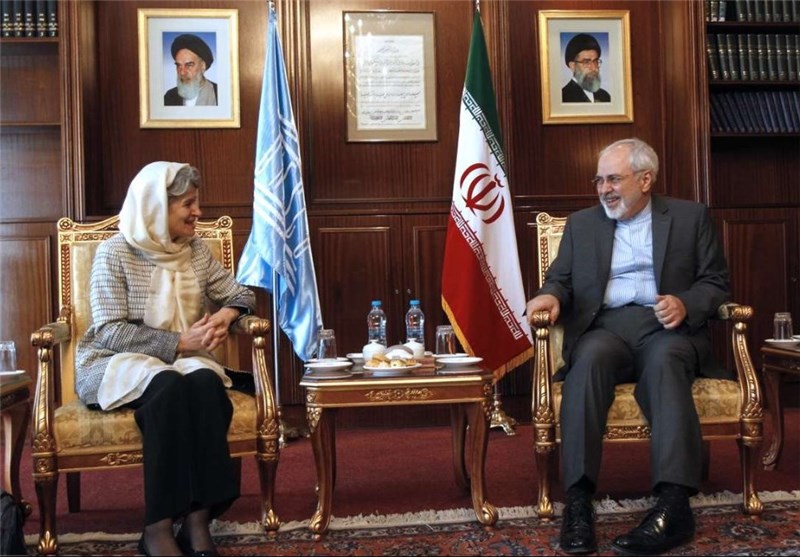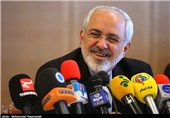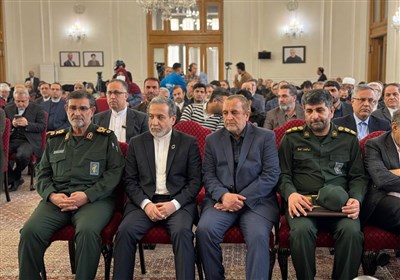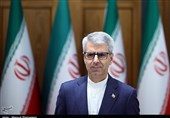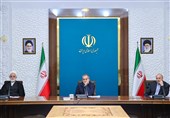Extremism Threatening Peace, Security, Human Culture: Iran’s FM
TEHRAN (Tasnim) – Iran’s Foreign Minister Mohammad Javad Zarif warned against growing violence and extremism at regional and international levels, and said extremism is a threat to human culture.
“Violence and extremism are threatening not only international peace and security but also the culture and common heritage of mankind,” he said Saturday in a meeting with Director-General of the United Nations Educational, Scientific and Cultural Organization (UNESCO) Irina Bokova.
Zarif referred to Iranian President Hassan Rouhani’s proposal for a World Against Violence and Extremism (WAVE) and hoped that the UN’s adoption of the proposal would lead to further and more tangible cooperation between countries and the regional and international organizations in fighting violence and extremism.
The UN General Assembly on December 19, 2013, voted by consensus to approve the WAVE Act, which calls on all nations across the globe to denounce violence and extremism.
Under the resolution, the General Assembly would urge all member states to unite against violent extremism in all its forms and manifestations, as well as sectarian violence.
Elsewhere in his remarks, Zarif highlighted the cooperation between Iran and UNESCO in scientific and cultural fields and their efforts to protect the common heritage of humanity and attached importance to enhanced cooperation in different areas.
UNESCO’s chief, for her part, described Iran as a country with rich culture and hailed the development of cultural and scientific collaborations with the Islamic Republic.
Bokova further praised the Iranian government and institutions for their efforts to protect, preserve and expand the common heritage of mankind.
Zarif and Bokova in a ceremony held earlier on Saturday unveiled a collection of the historical maps of Iran that have been already included in the Memory of the World Register.
The collection of maps is a compilation of handwritten and lithographic maps which show the geographical plateau of Iran as a major part of the historical Silk Road as well as the interface of the North-South corridor.
The collection is a significant research document, providing an authentic source for studying the demographic, natural, historical and cultural geography of different West-Asian regions.
The maps provide information on boundary lines, impacts of human-instigated and natural disasters on the borders, and geographical place names some of which are now either non-existent or have been renamed.
